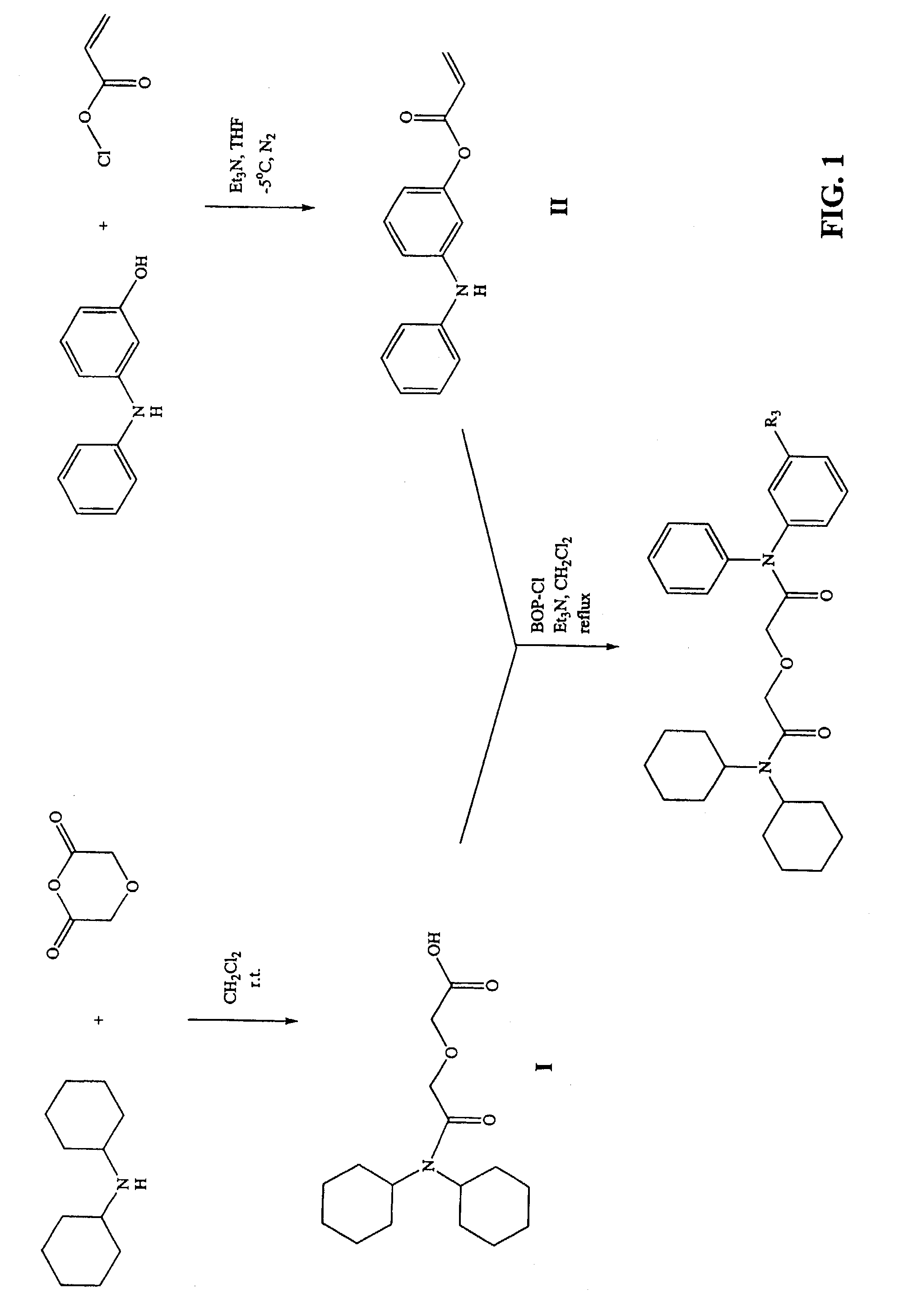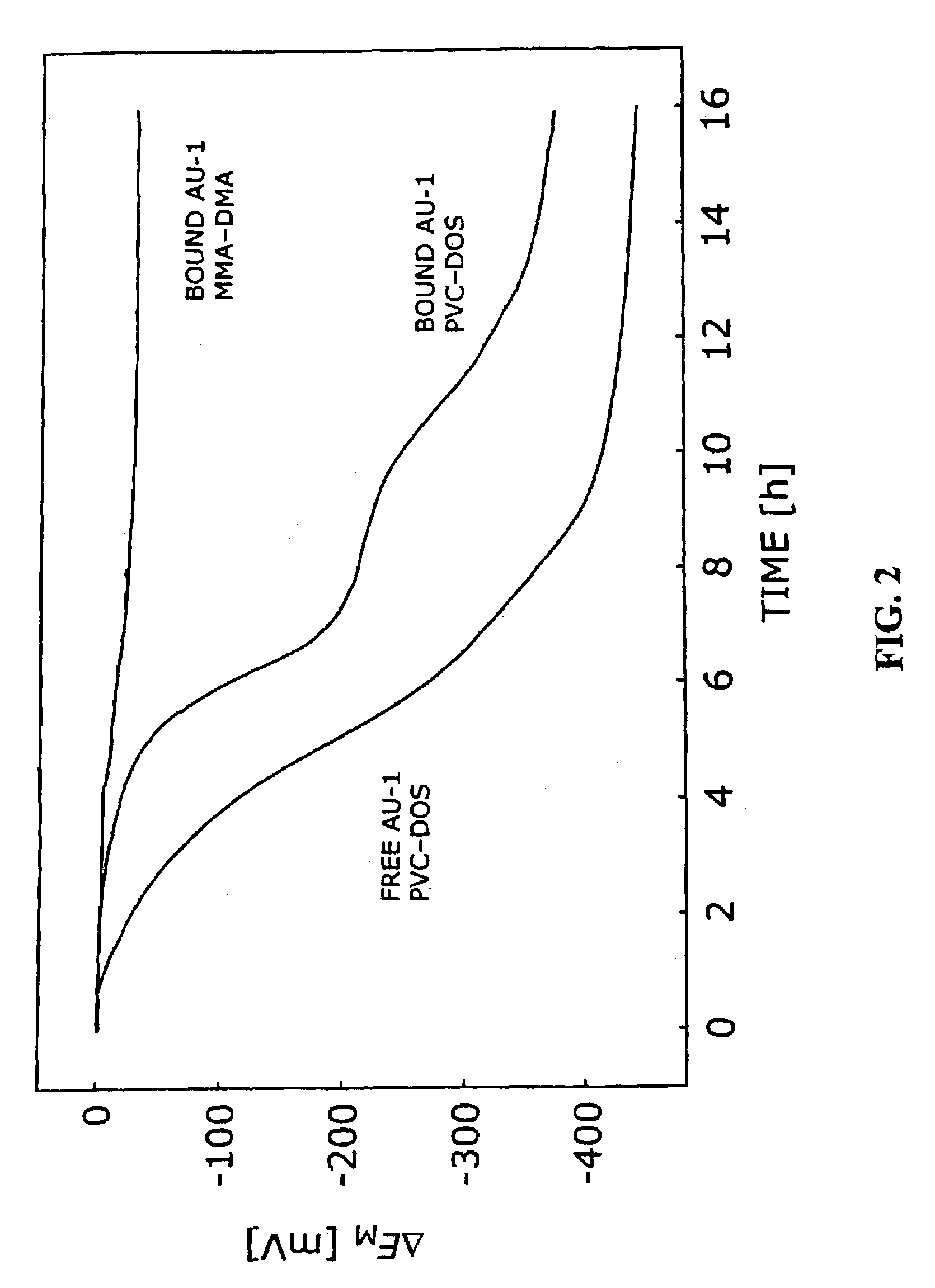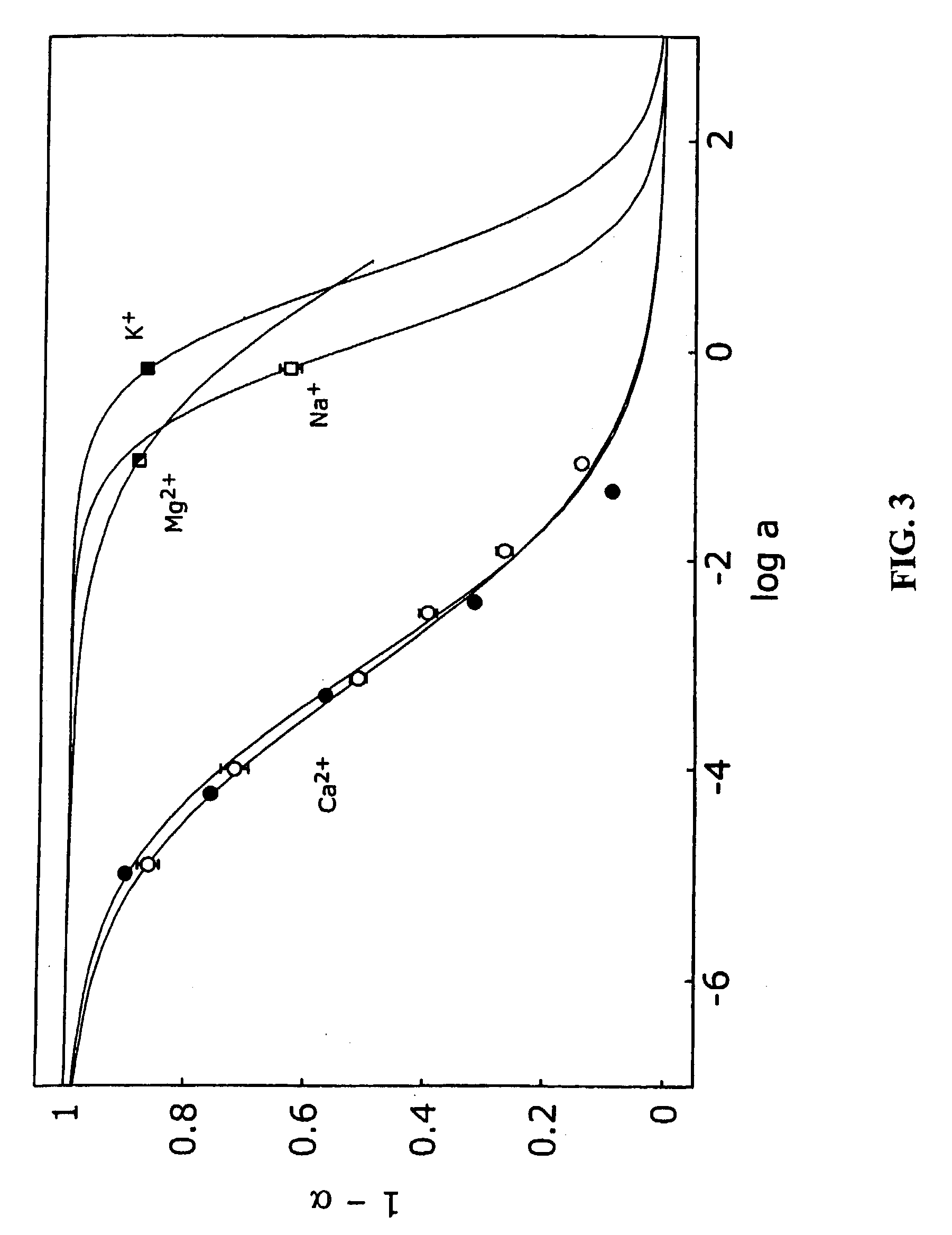Ion-detecting sensors comprising plasticizer-free copolymers
- Summary
- Abstract
- Description
- Claims
- Application Information
AI Technical Summary
Problems solved by technology
Method used
Image
Examples
example 1
Syntheses of N,N-dicyclohexyl-N′-phenyl-N′-(4-acrylophenyl)-3-oxapentanediamide (AU-1)
[0111]Reagents: Dicyclohexylamine, diglycolic anhydride, 3-hydroxy diphenylamine, acryloyl chloride, triethylamine and bis (2-oxo-3-oxazolidinyl)-phosphinic chloride (BOP-Cl) were reagent grade from Aldrich (Milwaukee, Wis.). All solvents used for syntheses were obtained from Fisher Scientific (Pittsburgh, Pa.) and dried before using.
[0112]The monomers methyl methacrylate, 99.5% and n-decyl methacrylate, 99% were obtained from Polysciences, Inc. (Warrington, Pa.). 4′-acryloylamidobenzo-15-crown-5 (AAB15C5) and 4′-acryloylamidobenzo-18-crown-6 (AAB18C6) were obtained from Acros Organics (Pittsburgh, Pa.). The polymerization initiator 2,2′-azobis-isobutyronitrile, 98%, (AIBN) was obtained from Aldrich. Benzene, dichloromethane and 1,4-dioxane were reagent grade and obtained from Fisher. Benzene and dichloromethane were purified by fractional distillation after refluxing with calcium hydride for 4 hou...
example 2
Synthesis of Polymers Containing AU-1
[0117]All polymers were synthesized via thermally initiated free radical solution polymerization. The amount of methyl methacrylate and n-decyl methacrylate used was the same as reported previously (19). For polymers containing grafted K+-selective ionophores, 1 wt % AAB15C5 and AAB18C6 were used. The amount of AU-1 varied from 1 wt % to 5 wt %. The calculated amounts (according to the Fox equation (56)) of each monomeric unit were added to 5 mL of dry benzene. The solution was purged with N2 for 10 minutes before adding AIBN, 3.4 mg for grafted potassium ionophore polymers and 5.1 mg for polymer with AU-1. The homogeneous solution was continuously stirred and the temperature was ramped to 90° C., which was maintained for 16 hours. After the reaction was complete, the solvent was evaporated and the polymer was redissolved in 10 mL of dioxane. Aliquots of polymer solution (2 mL) were added to 100 mL of distilled water under vigorous stirring. The ...
example 3
Preparation of ISE Membrane and Optode Thin Films Comprising Graft Polymers
[0118]ISE membranes were prepared by dissolving NaTFPB (5 mmol / kg), ionophore (20 mmol / kg, if used), PVC, and plasticizer (DOS or NPOE) to give a total cocktail mass of 140 mg in 1.5 mL of THF. For the plasticizer-free membrane with free calcium ionophore AU-1 the cocktail contained ionophore, NaTFPB and blank MMA-DMA polymer were used, while the cocktail of the membrane with grafted ionophore contained 5 mmol / kg NaTFPB and either MMA-DMA-AU-1, MMA-DMA-AAB 15C5 or MMA-DMA-AAB 18C6 copolymer.
[0119]Cocktails were poured into glass rings 2.2 cm i.d.) affixed onto glass microscope slides. The solvent was evaporated overnight to give a transparent membrane. The plasticizer-free MMA-DMA membrane was soaked in water for an hour and carefully peeled from the glass slide with a scalpel. The parent membranes were then conditioned overnight in 0.01 M MgCl2. Discs (6 mm in diameter) were cut from the parent membranes and...
PUM
| Property | Measurement | Unit |
|---|---|---|
| Temperature | aaaaa | aaaaa |
| Fraction | aaaaa | aaaaa |
| Fraction | aaaaa | aaaaa |
Abstract
Description
Claims
Application Information
 Login to View More
Login to View More - R&D
- Intellectual Property
- Life Sciences
- Materials
- Tech Scout
- Unparalleled Data Quality
- Higher Quality Content
- 60% Fewer Hallucinations
Browse by: Latest US Patents, China's latest patents, Technical Efficacy Thesaurus, Application Domain, Technology Topic, Popular Technical Reports.
© 2025 PatSnap. All rights reserved.Legal|Privacy policy|Modern Slavery Act Transparency Statement|Sitemap|About US| Contact US: help@patsnap.com



